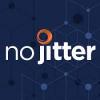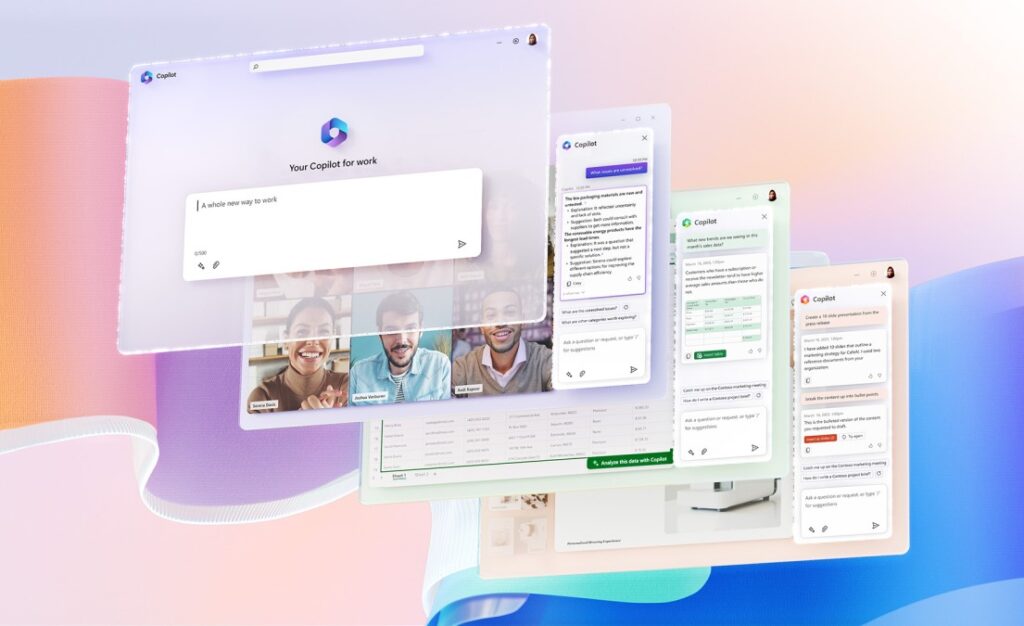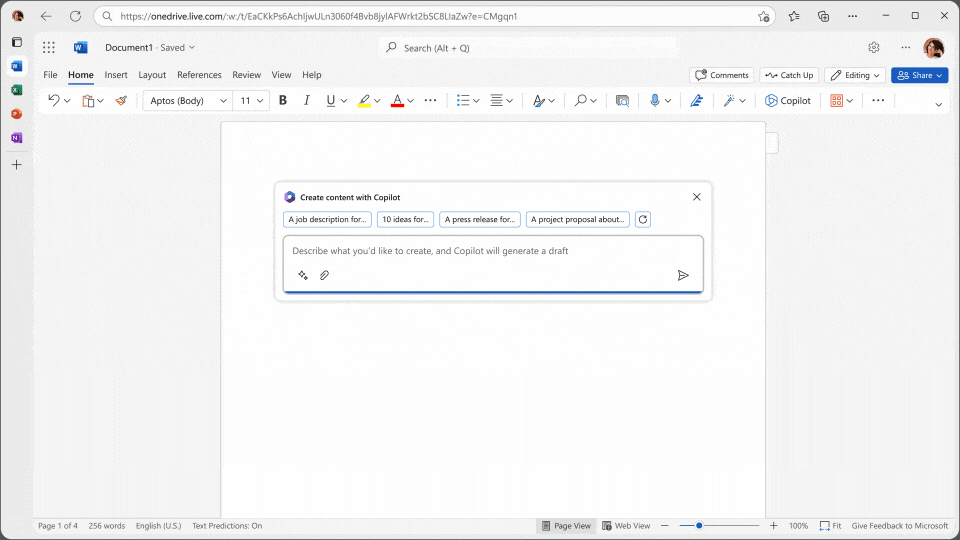Embedded in the Microsoft 365 apps people use every day, Microsoft 365 Copilot assists in routine knowledge-based tasks commonly performed by people. Read on for what that looks like in those applications – e.g., Word, Excel, Teams, and PowerPoint.
Introduction: A New Era of AI with Microsoft's Copilot
Microsoft 365 Copilot AI features use the Microsoft Azure OpenAI Service and combines the capabilities of the OpenAI large language model (LLMs) that are hosted with the Microsoft Azure Cloud with an enterprise’s data in the Microsoft Graph and the Microsoft 365 apps. Check out this article for more information about on what Microsoft 365 Copilot is.
Understanding Microsoft 365 Copilot: Your Guide for Work
Microsoft 365 Copilot can be used to assist in the creation of documents, presentations, spreadsheets, notes, email, and more. The key word here is “assist.” The following is a short summary of what using Copilot looks like in each of the company’s popular software tools including:
- Microsoft Word and Copilot: Quickly compose or edit text on a particular topic. It can add new content based on what is already in the document and generate summaries of existing documents, as well.
- Microsoft Outlook and Copilot: Copilot can draft an email and generate summaries of email threads.
- Microsoft PowerPoint and Copilot: Create a presentation, including text and images, based on the content in other documents. It can also create a summary presentation of a longer presentation an reorganize and/or restructure the presentation.
- Microsoft Excel and Copilot: Create formulas based on a natural language description of what users are trying to accomplish. It can also analyze data sets and comment on trends it discovers.
- Microsoft Teams and Copilot: Summarize information from a Teams chat thread and summarize Teams VoIP and PSTN calls. It will also summarize key discussion points and suggest action items, during (or after) a meeting.
- Microsoft OneNote and Copilot: Use prompts to draft plans, generate ideas, create lists, and organize information.
- Microsoft 365 Chat: Summarize projects, chats, meetings; collaborate on ideas and content using instructions or reference files; search information in files, meetings, chats, emails, the Web and an enterprise knowledge base.
- Copilot in Loop: Plan, brainstorm, and collaborate; refine and edit.
- Copilot in Whiteboard: Suggest new ideas to spark creativity, organize and summarize ideas.
- Copilot in Designer: More of a consumer-oriented application, Copilot in Designer helps users create visuals, social media posts, invitations and more. Designer will also be integrated into Microsoft Word so that Copilot can use the context of the document to propose visuals.
Enhancing Productivity with Microsoft Copilot & Generative AI
So how does Microsoft Copilot enhance productivity?
Let’s take a more detailed look at how it works in Word, as shown in the animated gif below. This short demo (produced by Microsoft) shows the user prompting Copilot to draft a two-page proposal based on data contained in the specified documents. Once Copilot has created the proposal, the user can choose to keep or edit the output. This is done by clicking on prompts to have Copilot iterate and/or directly editing what the AI assistant produced.
How much time can be saved by using an AI assistant like Copilot?
The short answer: No one is entirely sure, but estimates abound. The longer answer: There are multiple published studies that attempt to quantify those time savings. The basic idea is that by assisting with and/or automating rote tasks or other time-intensive tasks that computers/software are good at performing, knowledge workers can spend their time in more creative, value-added endeavors.
The Microsoft AI + Productivity research team and Microsoft’s Office of the Chief Economist led survey research of users in the Copilot for Microsoft 365 Early Access Program. Multiple surveys were conducted, but the following results were gleaned from a survey of 297 users in the Copilot for Microsoft 365 Early Access Program. Some of the survey findings are as follows:
- 67% said Copilot saved them time so they could focus on more important work. On average, users reported daily time savings of 14 minutes, or 1.2 hours a week. 22% of people said they save more than 30 minutes a day.
- If users reported saving more than 30 minutes a day, they were asked what they spent that saved time on.
- The top answer was focus work (53%), while only 7% spent it on administrative tasks such as data entry.
- The second most common answer was using that time for additional meetings (16%) – which the study itself said “could be counterproductive on top of already high meeting loads.”
Other organizations have also conducted research on the impact of generative AI applications like Microsoft 365 Copilot on productivity. A small sampling of those include:
- McKinsey estimated that: “Our latest research estimates that generative AI could add the equivalent of $2.6 trillion to $4.4 trillion annually across the 63 use cases we analyzed.”
- A pair of World Economic Forum whitepapers “Jobs of Tomorrow: Large Language Models and Jobs” and “The Future of Jobs Report 2023” discussed their view on the future of work and jobs, and their analysis of (generative) AI-based tools (which, as a category, includes Microsoft 365 Copilot) on work. In the Jobs of Tomorrow report, for example, the WEF concluded that “tasks with the highest potential for automation by LLMs tend to be routine and repetitive, while those with the highest potential for augmentation require abstract reasoning and problem-solving skills. Tasks with lower potential for exposure require a high degree of personal interaction and collaboration.”
- GPTs are GPTs: An Early Look at the Labor Market Impact Potential of Large Language Models. In this paper, the authors conclude that “around 80% of the U.S. workforce could have at least 10% of their work tasks affected by the introduction of LLMs, while approximately 19% of workers may see at least 50% of their tasks impacted.”
- This MIT working paper (not peer reviewed) examines the productivity effects of generative AI (the assistive chatbot ChatGPT) in the context of mid-level professional writing tasks via an online experiment which assigned “occupation-specific, incentivized writing tasks to 444 college-educated professionals, and randomly expose half of them to ChatGPT.” Per the paper’s abstract, the study found that ChatGPT raised average productivity, benefited low-ability workers more, substituted for “worker effort rather than complementing worker skills,” restructured tasks toward “idea-generation and editing and away from rough-drafting.” Access the report itself for more detail on its methodology and findings.
Addressing Concerns: Safety, Privacy, and Accessibility
Safety, privacy, and accessibility were key concerns for enterprises before the advent of generative AI-based tools such as Microsoft 365 Copilot. With the rollout of Copilot, and similar tools, and the access those tools have to private data, those concerns have only intensified.
Data, Privacy, and Security Measures for Microsoft 365 Copilot
The information presented here is based on Microsoft’s statements regarding the privacy of data used and accessed by Microsoft 365 Copilot. This site contains more information about Microsoft’s privacy policies while this site includes all of the “product terms” associated with Microsoft 365 which govern Microsoft 365 Copilot now that it is generally available.
According to Microsoft, the permissions model within a company’s Microsoft 365 tenant helps ensure that data will not unintentionally leak between users, groups, and tenants. Microsoft 365 Copilot presents only data that each individual can access using the same underlying controls for data access used in other Microsoft 365 services. The Semantic Index honors the user identity-based access boundary so that the grounding process only accesses content that the current user is authorized to access.
Microsoft has stated that if an organization has data that's encrypted by Microsoft Purview Information Protection, it will not be returned by Microsoft 365 Copilot unless the user is granted at least the “View” usage right. Microsoft said that encryption can be applied by sensitivity labels or by restricted permissions in Microsoft 365 apps by using Information Rights Management (IRM). While Microsoft 365 Copilot generated content currently does not inherit the most restrictive permissions or label from the source, Microsoft 365 Copilot will cite the original source and that original source will retain those protections.
If a company “turns off” the connected experiences feature that analyzes content for Microsoft 365 Apps on Windows or Mac devices in an organization, Microsoft 365 Copilot features will not be available in the following apps:
- Excel
- PowerPoint
- OneNote
- Outlook (classic)
- Word
Microsoft says that it implements multiple forms of protections to help prevent customers from compromising Microsoft 365 services and applications or gaining unauthorized access to other tenants or the Microsoft 365 system itself. These include:
- Logical isolation of customer content within each tenant for Microsoft 365 services.
- Physical security, background screening, and a multi-layered encryption strategy to protect the confidentiality and integrity of customer content.
- Service-side technologies that encrypt customer content at rest and in transit, including BitLocker, per-file encryption, Transport Layer Security (TLS) and Internet Protocol Security (IPsec).
- For content accessed through Microsoft 365 Copilot plug-ins, encryption can exclude programmatic access, thus limiting the plug-in from accessing the content.
Data Used in Training LLMs
According to Microsoft, prompts, responses, and data accessed through Microsoft Graph are not used to train foundation LLMs, including those used by Microsoft 365 Copilot. When prompts are inputted using Microsoft 365 Copilot, the information contained within those prompts, the data they retrieve, and the generated responses remain within the Microsoft 365 service boundary, in keeping with current privacy, security, and compliance commitments. Microsoft 365 Copilot use Azure OpenAI services for processing, not OpenAI’s publicly available services.
Microsoft also says that the “responses that generative AI produces aren't guaranteed to be 100% factual.” These incorrect responses are usually called hallucinations.
Microsoft says it does not claim ownership of the output of the Copilot service. Microsoft also doesn't decide on whether a customer’s output is copyright protected or enforceable against other users. In September 2023, Microsoft announced a Copilot Copyright Commitment for its customers.
According to Microsoft, Copilot is compliant with the company’s existing privacy, security, and compliance commitments to Microsoft 365 commercial customers, including the General Data Protection Regulation (GDPR) and European Union (EU) Data Boundary.
Microsoft’s Actions Toward Inclusive Tech: Is Microsoft Copilot Free?
Microsoft 365 Copilot is generally available for enterprise customers. Microsoft 365 Copilot requires a $30 per month per user subscription for Microsoft 365 E3, E5, Business Standard and Business Premium customers. If a company does not have one of those subscriptions, then Copilot cannot be used. If a company’s IT administrators does not enable Copilot, then its capabilities cannot be used. Note that Microsoft has imposed a minimum order of 300 seats on Copilot subscriptions, per this Microsoft Community post.
Microsoft 365 Copilot Community and Support
Copilot is designed to be intuitive and easy to use. In the event that users face challenges when getting the most out of Copilot, Microsoft has launched the Microsoft 365 Copilot Community as a place where users can connect, share ideas, and collaborate.
To get a broader understanding of how Microsoft is approaching AI, Microsoft has also launched this Copilot site. Users and IT administrators can also visit the Microsoft 365 documentation site for security, privacy and compliance information, how to get started and trained on Copilot and how to extend Copilot with plugins in integrated applications.










